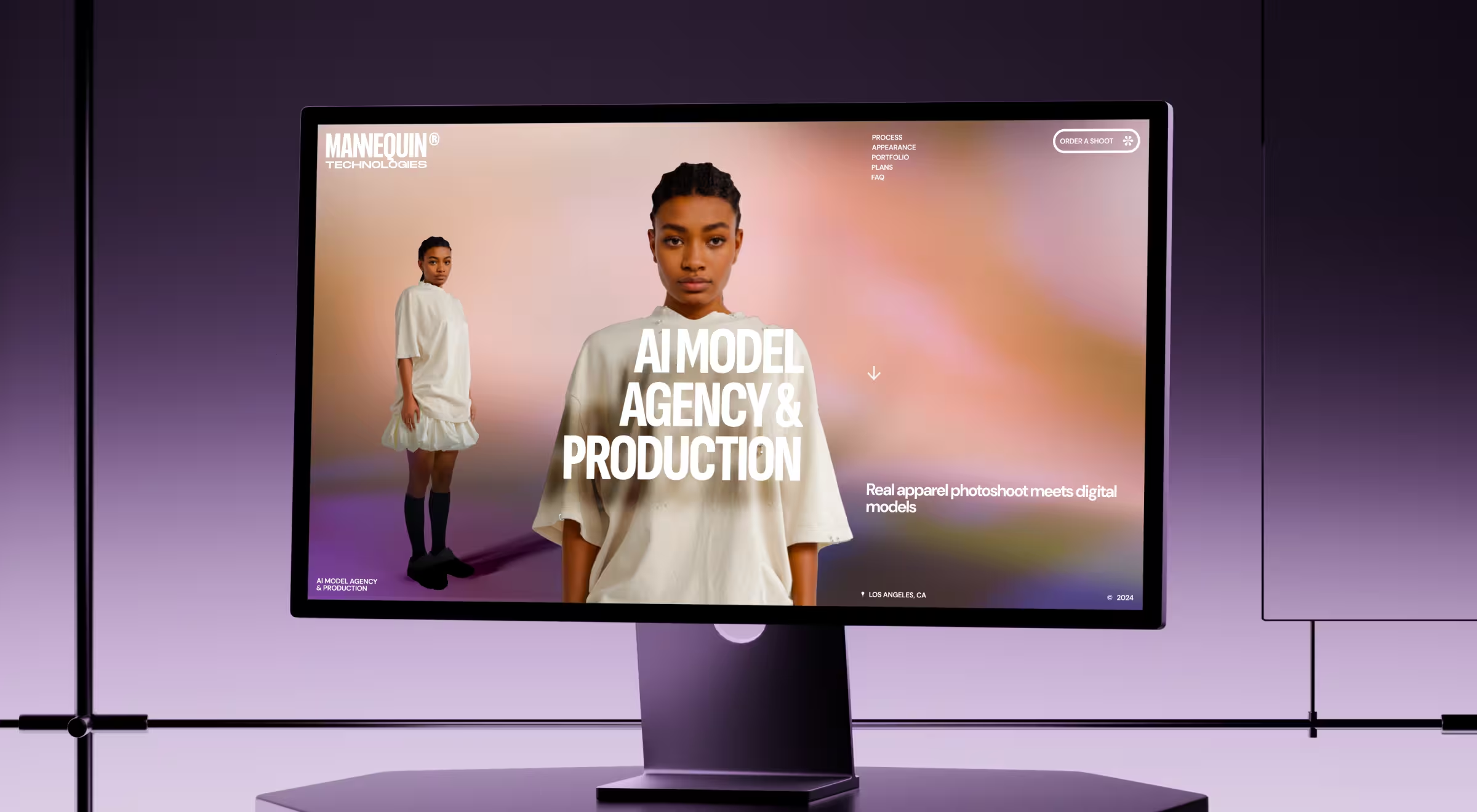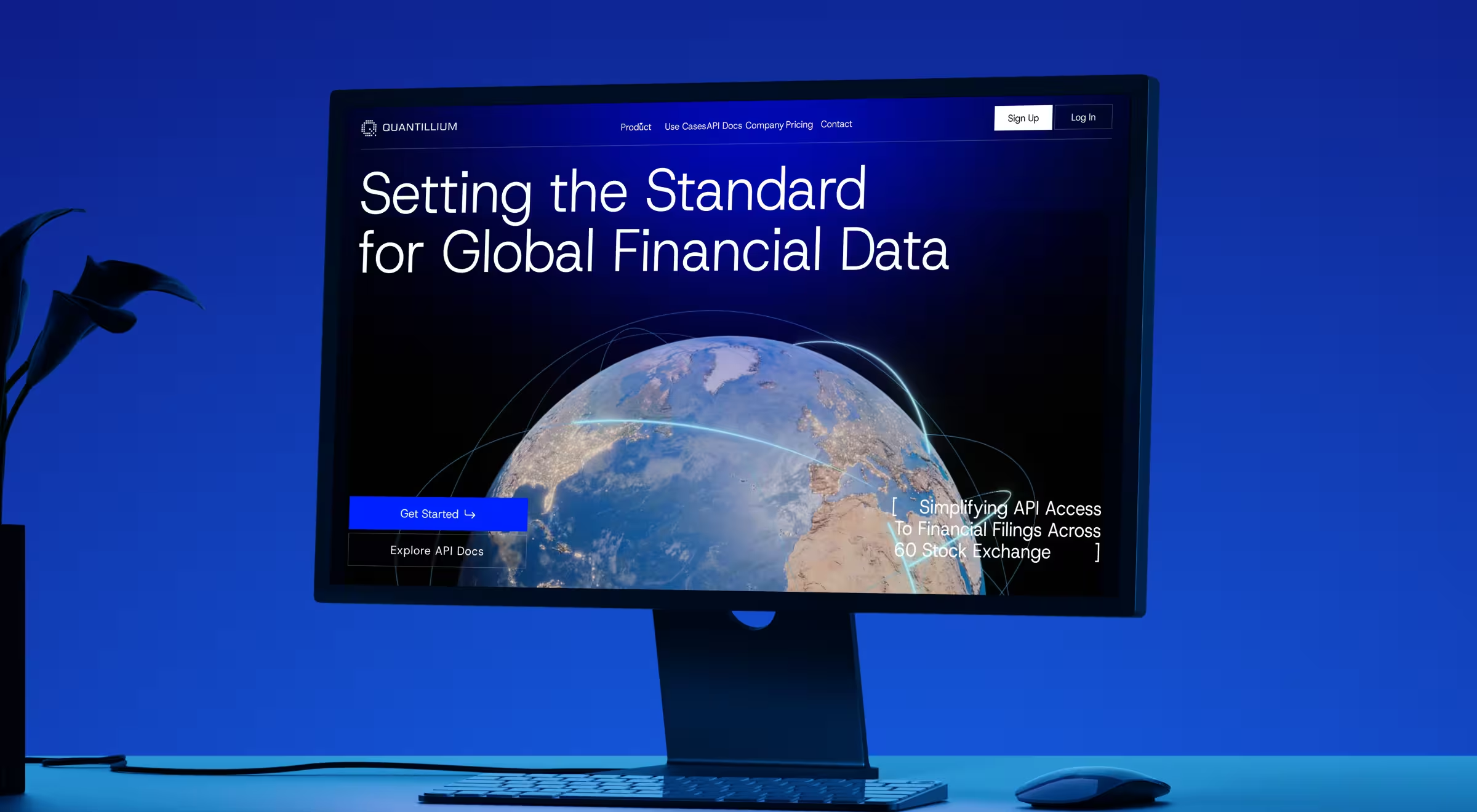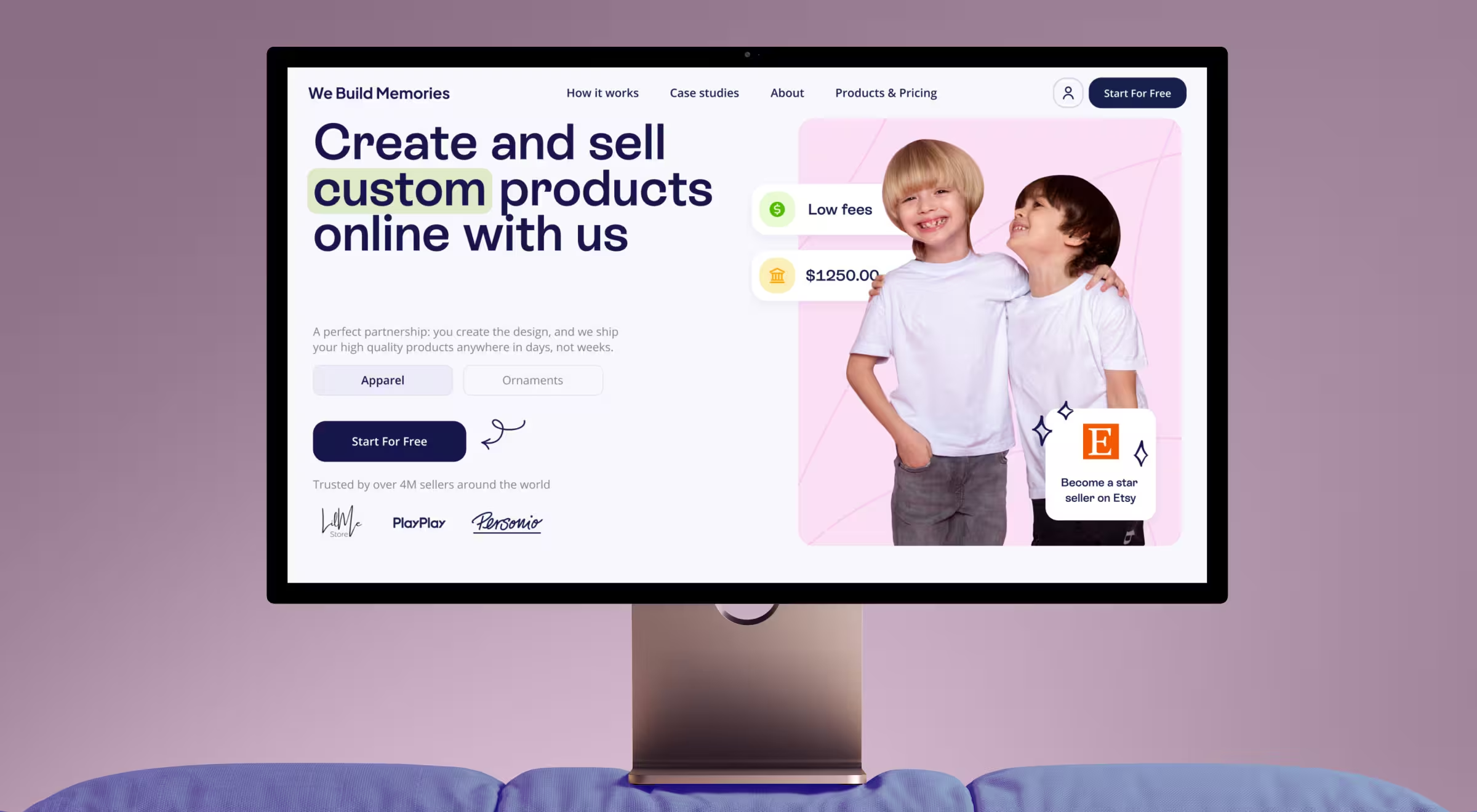Your first roadmap will change in a week. Your market may pivot in a quarter. But when the product vision board is clear, every change stays anchored to a single outcome the customer actually pays for.
In 2025, as AI tools speed execution, teams risk losing strategic alignment. A product vision board keeps human intent and customer outcomes at the center of every sprint.
Below you’ll find a practical definition, a five‑block product vision board template, and stage‑specific examples from Lazarev.agency’s cases that show exactly how product teams keep focus — even as code, funding, and headcount explode.
Key takeaways
- A product vision board is the “why” above the roadmap. It’s a one-page system — Vision, Target customer, Needs, Product, Business goals — that anchors every change to customer value, not feature churn.
- Clarity beats volume: Box 1 → Sprint 1. If your vision can’t fit in box 1 (one sentence), it won’t translate into sprint 1 actions. Tight language prevents scope creep and keeps teams aligned.
- From workshop to execution is a defined path. Run a workshop → validate with user research → define MVP to prove the promise → build a roadmap tied to board boxes → set metrics that reflect user value and business outcomes.
- AI accelerates each box without replacing judgment. Use LLMs to cluster needs (JTBD), generate feature hypotheses that prove the vision, and propose revenue/retention metrics with baselines; keep humans as editors of intent.
- Make it living: govern, measure, evolve. Review quarterly, tag every epic to a board box, and track alignment KPIs (e.g., % epics mapped, value lead time). This keeps startups, enterprises, and new-feature teams moving in one direction.
Definition: what is a product vision board and how it differs from a roadmap
Every product starts with ambition. But without a clear compass, ambition turns into chaos — endless meetings, shifting priorities, and roadmaps that drift week by week.
A product vision board, first introduced by Roman Pichler, keeps that chaos in check. It’s the strategic north star that comes before the roadmap defining why the product should exist, who it’s for, and what outcome it should create long before you start listing features in Jira.
Where a roadmap shows how and when you’ll build, the vision board captures why you’re building in the first place.
The five building blocks that keep vision grounded
A product vision board is structured around five boxes — each one answering a single, high-impact question. Together, they form a logical chain from idea to value.
These boxes are anchors. Each one filters every idea, metric, and release through the same simple logic: Does this serve the vision we agreed on?
Why box 1 and sprint 1 matter
In most templates, box 1 represents the Vision — the top-left block and the most powerful sentence on the page. It’s the line that defines your product’s purpose.
If that single sentence can’t fit cleanly into box 1, your team won’t be able to translate it into action by sprint 1 — your first development cycle.
That’s why we at Lazarev.agency say:
⚠️ “A vision that doesn’t fit in box 1 will never fit in sprint 1.”
It’s not a design joke. It’s a truth about focus. A concise vision creates alignment; a fuzzy one creates scope creep.
When your team can recall the product vision in one breath, every design review and prioritization meeting moves faster because everyone already knows the destination.
Product vision board template
Once you understand what each block means, the next step is to make it real. The product vision board template below turns strategy into structure — one line at a time. Think of it as your clarity test: if you can’t fill each box in one sentence, you don’t yet have alignment.
A complete vision board connects why, who, what, and how success looks — all on a single page.
It becomes your product’s operating narrative: a shared artifact that designers, engineers, and executives can point to and say, “This is what we’re building, and this is why it matters.”
Before moving on, pressure-test your draft with three quick checks:
- Can everyone on your team summarize it in under a minute?
- Can every roadmap item map back to one of the five boxes?
- Can you evolve it as the market shifts without rewriting the whole thing?
If the answer is yes, your vision board is alive. And it’s great.
Product vision board vs other frameworks
It’s easy to confuse a vision board with other popular tools like OKRs or the Lean Canvas, but they serve different purposes in the product stack.
Here’s the difference in plain terms:
- The vision board gives you a story — the “why” that inspires direction.
- OKRs give you targets — the “how much” that measures progress.
- The Lean Canvas gives you evidence — the “how” your business model holds up.
Together, they form a hierarchy: Vision → Validation → Execution.
🔍 In our Blockbeat case study, a single-page vision board aligned both investor narrative and product UX proving that when story and strategy share the same page, momentum follows.
Running a vision board workshop
A great product vision board rarely appears in isolation. It’s built in a workshop where diverse perspectives meet, collide, and align. The goal is to create a shared sense of direction every stakeholder can stand behind.
Depending on your team’s size, location, and product stage, you can run the session in three effective formats:
Lazarev.agency expert tips for a productive workshop
- Start with the biggest risks. Identify the biggest unknowns early — market fit, user need, or technical feasibility — and let them guide discussion.
- Time-box debates. Endless alignment kills creativity. Set strict limits for decision rounds to keep energy high.
- Log insights instantly. Capture every new idea directly into your shared board or doc. Nothing derails clarity like forgotten context.
- End with ownership. Assign a “vision board guardian” — usually the product lead — responsible for keeping the board alive as the roadmap evolves.
A well-run workshop delivers commitment. By the end, everyone should be able to articulate the same sentence when asked: “What are we building, and why?”
🔍 Explore our full UX workshop playbook to see how Lazarev.agency structures vision board sessions that align teams, reduce risk, and spark momentum that lasts beyond kickoff.
Using AI to accelerate your product vision board workflow
AI can’t define your vision but it can help you refine, validate, and operationalize it. The best teams now treat large language models as thought partners: fast at synthesis, tireless at pattern-spotting, and invaluable for turning vague ideas into structured insight.
Below are AI-assisted checkpoints you can integrate after your vision board workshop to sharpen each box and keep alignment data-driven rather than opinion-driven.
1. Vision
Use AI to stress-test clarity and resonance.
- Prompt: “Rewrite this product vision statement at three abstraction levels: strategic, user-facing, and investor-facing. Identify missing impact verbs.”
- Goal: Ensure your statement inspires multiple audiences without losing its core promise.
- Checkpoint: Does every version still express the same future outcome? If not, the vision is too vague.
2. Target customer
Turn unstructured audience data into precise segments.
- Prompt: “Analyze this dataset of early adopters and describe three behavioral archetypes with goals, triggers, and frustrations.”
- Goal: Move from demographics to motivation-based personas.
- Checkpoint: Do these clusters align with your ‘who benefits most’ box? If not, revisit your assumptions.
3. Needs
Translate noise into validated opportunity areas.
- Prompt: “Summarize the top 50 support tickets, reviews, or interview notes into outcome-based need statements. Group them by Jobs-to-Be-Done themes.”
- Goal: Separate recurring pain points from one-off requests.
- Checkpoint: Each need should sound like a user outcome, not a feature request.
4. Product
Use AI to generate and rank solution hypotheses.
- Prompt: “Based on these user needs and the vision statement, suggest three feature concepts that directly prove the Box 1 promise. For each, list assumptions and expected user behaviors.”
- Goal: Link features to outcomes and uncover blind spots before design starts.
- Checkpoint: Does each idea tie back to a real need and measurable effect?
5. Business goals
Model success metrics tied to both user and company value.
- Prompt: “Propose two revenue and one retention metric that reflect the stated business goal. Suggest realistic baselines from comparable products.”
- Goal: Keep metrics meaningful and connected to the customer benefit, not vanity numbers.
- Checkpoint: Are you measuring the value users feel or just what finance tracks? Both matter — but alignment matters more.
When used this way, AI becomes an accelerator for alignment. It speeds discovery, challenges bias, and keeps every box of your product vision board grounded in real evidence.
At Lazarev.agency, we apply this AI-assisted process in early-stage workshops to help teams move from intuition to insight in days without ever losing the human judgment that gives a vision its meaning.
Use cases by business stage with Lazarev.agency’s real projects
Each growth stage tests a vision board in its own way. The snapshots below show how the same five‑block canvas adapts from scrappy startup through enterprise platform to single‑feature launch, while still keeping every team aligned.
Stage 1. Early‑stage startup. Case — Mannequin
Read the full case study here.

💼 Problem: costly studio shoots throttled catalogue expansion.
👁🗨 Vision‑board snapshot:
- Vision (box 1): “Real garments, zero studio time, global model diversity.”
- Target customer: Fashion e‑commerce teams that burn cash on photoshoots.
- Needs: Speed, authenticity, localization.
- Product: Story‑driven site plus landing page focused on key features and 24–48 h image delivery.
- Business goals: Create focus on sales demos and shorten the time to first deal.
💎 Outcome: a converter‑friendly gallery and narrative flow shipped, moving Mannequin from stealth to revenue. An example of driving sales through clear product storytelling.
Stage 2. Enterprise product team. Case — Quantillium
Read the full case study here.

💼 Problem: complex filings, new markets, cross‑functional teams everywhere.
👁🗨 Vision‑board snapshot:
- Vision: “Make regulatory data accessible, actionable, and ready for innovation.”
- Target customer: Developers, quants, analysts across 60 stock exchanges and 40 K companies.
- Needs: One API, standardized JSON, daily updates.
- Product: Developer‑first docs, tiered plans ($99 → $999), and live playground.
- Business goals: Increase engagement and generate revenue via self‑serve plans.
💎 Outcome: after launch, session duration +32% and API‑docs visits +18% validated the board’s customer‑focused direction.
Stage 3. New‑feature planning. Case — We Build Memories
Read the full case study here.

💼 Problem: growth had stalled; churn climbed.
👁🗨 Vision‑board snapshot:
- Vision: “Seamless, playful personalization for every keepsake.”
- Target Customer: 4 M+ Etsy sellers needing fast, low‑fee fulfillment.
- Needs: Intuitive customizer, clear pricing, order‑tracking dashboard.
- Product: New design system, AI‑assisted customization UI, backend for order visibility.
- Business goals: Lift conversion, extend session time, cut churn.
💎 Outcome: conversion +20%, time‑on‑site +25%, revenue +15%, churn –30% after rollout, proving the board aligned product teams and business objectives.
💁♂️ Takeaway: In each scenario, the product vision board turned abstract ideas into a shared vision that guided key stakeholders, reduced development effort, and delivered measurable product success.
Why product vision boards fail in practice
Even the cleanest vision boards can collapse once real work begins. The issue rarely lies in the framework itself — it’s how teams interpret and maintain it over time. Here’s where most fall short.
Misaligned time horizons
Teams treat the vision board like a quarterly goal instead of a long-term compass. Roadmaps shrink it down to what can ship in three months, erasing the original intent. A strong vision board should outlive any single sprint. It defines the direction, not the next deliverable.
Metrics drift
Once KPIs take center stage, the narrative fades. What began as “empower independent creators” becomes “increase signups by 40%.” Numbers matter but without the story behind them, teams chase growth detached from purpose. The board should keep metrics anchored in meaning.
Stakeholder overload
When too many voices edit the board, clarity disappears. Every department adds its own language, priorities, and jargon until the board becomes a meeting artifact instead of a guiding document. Real alignment requires synthesis.
At Lazarev.agency, we treat the product vision board as a living contract — short enough to remember, precise enough to measure. It evolves as the product grows but never loses sight of the future it set out to build.
Common mistakes & quick fixes
Even experienced product owners can lose the thread between a product’s vision and its daily execution. A vision board is simple by design but that simplicity often hides traps that quietly derail alignment.
The table below is based on Lazarev.agency experience and highlights the most common pitfalls and how to fix them before they cascade into costly missteps.
A strong product vision board should survive real-world stress — new markets, team turnover, feature sprawl, or investor pressure. Revisit it often, question assumptions, and make updates visible to everyone involved.
❗️Remember: Your vision board is your product’s memory. Keep it alive, and it will keep your roadmap honest.
Top 10 product vision board examples analyzed
Great vision statements share one trait — they translate ambition into clarity. Each one tells you what the company stands for, who it serves, and what future it’s building toward, all in a single memorable line.
Below are ten product vision examples that set the standard for focus, scalability, and emotional resonance — the same qualities we emphasize at Lazarev.agency when shaping digital products from vision to validated strategy.
🔍 Notice the pattern:
Each of these statements is:
- Customer-centric — focused on people.
- Flexible — able to evolve as the product scales.
- Memorable — simple enough to repeat, strong enough to inspire.
At Lazarev.agency, we use the same lens when shaping our clients’ product vision boards:
- We translate abstract vision into actionable UX direction.
- We align AI-powered interfaces with clear human outcomes.
- We turn mission statements into measurable business strategies.
That’s how we ensure every vision — whether for a startup or an enterprise platform — becomes a system for growth.
How to turn a product vision board into a roadmap for execution
As we already figured out, a product vision board defines why your product exists but its real value appears when that vision shapes how you build. Turning the board into a roadmap bridges strategy and execution, ensuring every sprint, feature, and metric supports the same outcome.
1. Start with user research.
The Target Customer and Needs boxes contain assumptions. Validate them through interviews, surveys, and behavioral insights. This step confirms which pain points are real and worth solving grounding your roadmap in evidence, not opinion.
2. Move on to MVP definition.
The Product box becomes a testable plan. Define the smallest version of your product that still proves the vision. Each feature should directly link to a user need or value proposition from the board. This keeps scope lean and learning fast.
3. Build the product roadmap.
Translate your validated insights into milestones. Every initiative should connect back to at least one vision board element — user need, feature value, or business goal. This ensures prioritization stays aligned with strategy, not urgency.
4. Set metrics and success criteria.
The Business Goals box defines what success means. Turn it into measurable outcomes — engagement, retention, revenue, or cost reduction tied to user value. These metrics transform vision into accountability.
When used this way, the product vision board evolves from a kickoff artifact into a living strategic framework guiding research, design, and execution in the same direction.
🔍 Learn how Lazarev.agency turns product vision boards into scalable strategies in our product strategy framework — the same method we use to help startups and enterprises align vision, UX, and measurable growth.
Ready to turn your vision into a roadmap that delivers?
If your team has a clear idea but no unified direction, it’s time to connect strategy with execution.
At Lazarev.agency, we help startups and enterprises translate vision boards into actionable product roadmaps aligning design, development, and business goals around measurable outcomes.
Let’s build the roadmap your vision deserves.
👉 Talk to our product strategy team.




























.webp)




















